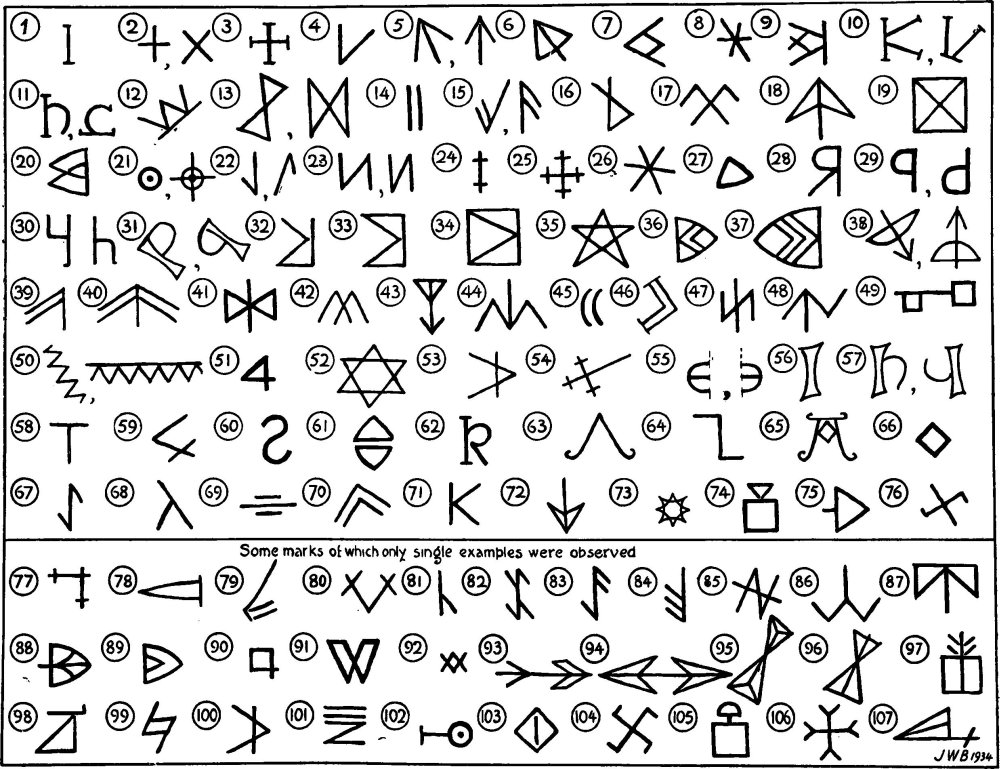An Inventory of the Historical Monuments in Herefordshire, Volume 3, North West. Originally published by His Majesty's Stationery Office, London, 1934.
This free content was digitised by double rekeying. All rights reserved.
'Mason's Marks in Herefordshire', in An Inventory of the Historical Monuments in Herefordshire, Volume 3, North West(London, 1934), British History Online https://prod.british-history.ac.uk/rchme/heref/vol3/pp221-222 [accessed 11 February 2025].
'Mason's Marks in Herefordshire', in An Inventory of the Historical Monuments in Herefordshire, Volume 3, North West(London, 1934), British History Online, accessed February 11, 2025, https://prod.british-history.ac.uk/rchme/heref/vol3/pp221-222.
"Mason's Marks in Herefordshire". An Inventory of the Historical Monuments in Herefordshire, Volume 3, North West. (London, 1934), British History Online. Web. 11 February 2025. https://prod.british-history.ac.uk/rchme/heref/vol3/pp221-222.
In this section
MASONS' MARKS IN HEREFORDSHIRE
These are unusually numerous in Herefordshire despite the probability that many must have disappeared owing to modern retooling and restoration. They are generally well defined, and some are really deep incisions: they range in size from about one inch, like the elaborate mark No. 73, of which many are seen at Canon Pyon, to as much as six or seven inches, but the majority average two to three inches.
They are particularly numerous at the Cathedral in every period from the early 12th century to the 16th century. Some are obviously initial letters, but the greater number are lines, crosses, angles, arrow-heads, etc., with many variants and elaborations.
An interesting form is the pentagram or 'Solomon's seal,' No. 35, which, although rare, is found several times in both Ledbury and Leominster churches; it has a variant in the sixpointed star or interlacing triangles, also found at Ledbury.
The bows and arrows, occurring many times in the Cathedral and elsewhere, the swastika, of which only two single examples (at Brinsop and Garway) have been discovered, the key, the mason's square and other designs are also of interest. The forms of shields with cheverons, on the N. Porch of the Cathedral, are each repeated and, as they appear sideways, were presumably cut before the stones were placed in position.
Those scratchings, of which no second example has been found, are shown separately, but they generally occur among the more numerous repeated marks in the same piece of architecture, and therefore may in some cases be assumed to be the master mason's work.
Other scratchings and incisions have been noticed, but are not illustrated as they are not the marks of the original craftsmen. Many churches appear to have no marks at all except on one particular part of the structure, such as an arcade, or a chapel added later (as at Bosbury and Garway), while in other cases, as at the Cathedral and Kington Church, they are found throughout the whole building.
J. W. BLOE.

Mediaeval Masons' Marks in Herefordshire
